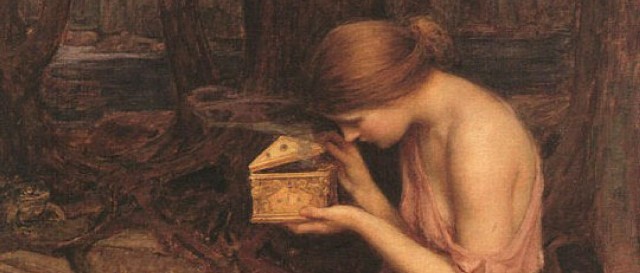The Grapevine Art & Soul Salon
Musings on Being and Becoming Human
Issue 18
The World Imagines Itself in Human Reverie

What can we learn about imagination, this mysterious way of living and seeing that is embedded in the fabric of creation, this perspective that experiences otherness? We know the human power of imagination as the source of art and, some would have it, the carrier of soul as well. Here are some other comments about imagination to consider as context for the pieces we've collected for Issue 18 of The Grapevine.
In A Midsummer Night's Dream, Shakespeare gave us the line: The lunatic, the lover, and the poet are of imagination all compact, leading us to notice that all three deal with invisibles. From the same play:
... as imagination bodies forth
The forms of things unknown, the poet's pen
Turns them to shapes and gives to airy nothing
A local habitation and a name.
Shakespeare compels us to ponder creator and creation, to consider our human role as co-creator of all the worlds we know.
Wordsworth ("Tintern Abbey") saw imagination as A motion and a spirit, that impels/ All thinking things, all objects of all thought,/ And rolls through all things.
William Blake's "Auguries of Innocence" begins with these examples of imaginative power:
To see a World in a Grain of Sand
And a Heaven in a Wild Flower
Hold infinity in the palm of your hand
And Eternity in an hour.
Blake also presents an intriguing juxtaposition in his phrase, "Jesus the Imagination." And Jesus, speaking in the New Testament, says My kingdom is spread all over the earth, but you do not see it, thus showing a mysterious kinship with the earth, with earthiness, and at the same time with what is invisible.
Among scientists, Albert Einstein declared that imagination is more important than information, while Carl Jung regards the imaginal soul as the "mother of all possibilities." Philosopher Edward S. Casey also speaks of the possibilizing power of imagination. All of these notions hearken back to Plato's The beginning of truth is to wonder at things and Clement of Alexandria's Wonder at things that are before thee, making this the first step to further knowledge.
Finally, here is a comment I heard in a lecture by James Hillman: Imagination doesn't argue; it simply plays a different tune.
These insights are points to ponder while you explore The Grapevine's selections.
Click on Entertaining Ideas for an essay by Charles Knott, "Things That Go Bump in My Mind" and for my essay, "What Happens When Imagination Fails?"
Under Presentations you will find a playful piece by Anne Lovett called "All Music was Once New," as well as a set of nine photographs by Sandy Mason, made during a trip into the Appalachian Mountains, and my poem "Where Orpheus Sings."
Views and Reviews contains my review and commentary on Diane Thomas' In Wilderness, a recently published novel set in the wilds of North Georgia.
Why We Love Atlanta features Jonathan Knott's appreciation of the Michael C. Carlos Museum. Jonathan's regular Tracking History column contains an article with photos about Atlanta's Oakland Cemetery, as well as a report on his recent visit to an event celebrating the history of the Fox Theatre.
Ravi Kumar's column World Voices discusses this idea: There is much more to us than can be measured by science alone.
In Around Town with Nancy Rose, see Nancy Law's review of the Booth Western Art Museum concert by the music duo called Granville Automatic.
Click on Poetry to see information about my chapbook MANTA Poems, published earlier this year by Finishing Line Press.
Our Museum links to tributes for Maya Angelou and Oliver Sacks.
Reflections is full of Breaking News and Mending News and includes a link to an essay called "The Power of Imagination" by journalist Chris Hedges (Information Clearing House).
The photo you see above is the contribution of Sherry Kent. The look and mood of it can be found many places in this issue, starting with the title, a quotation from Gaston Bachelard.
We hope you will lose yourself and find yourself in some of this material.
NOTES ON NEGOTIATING THE WEBSITE:If you are a new reader of The Grapevine, WELCOME! Please click on our open door below and read introductory material. If you are a returning reader, we welcome you back with great enthusiasm. You may wish to go directly to the buttons on the left and begin exploring pieces assembled for this issue.
Some of the links inside articles will take you into the archives. You will need to return to "Home" at the top of the page to get out of archives and back into Issue 18.
Spreading the Word
Please help us reach potentially interested readers by sending out The Grapevine link to family, friends, colleagues and, where appropriate, to any mailing list accessible to you. Who knows how many conversations we can start? We won't count, but we count on you to spread some words. Thanks!
THE DOOR IS OPEN. Come in....

The SALON presents a variety of writers and image makers, from promising beginners to seasoned artists. Anyone who wishes to submit a piece for our consideration can send it as a rich text format document (rtf file) through e-mail to editor Jonathan Knott: jknott@grapevineartandsoulsalon.com.
The Grapevine Art & Soul Salon welcomes comments from visitors. General inquiries can be sent to webmaster@grapevineartandsoulsalon.com. All our regular contributing writers can be e-mailed directly (click on Contributing Writers and open specific pages for e-mail addresses).
Editor and Host: Barbara KnottAssociate Editor: Jonathan Knott
Image Design: Bill Kennedy
Regular Contributing Writers: Ravi Kumar, Bill Kennedy, Nancy Law, Anne Lovett, Charles Knott, Jonathan Knott and Barbara Knott.
Opinions expressed on this site are the opinions of the authors themselves, not necessarily of The Grapevine Art & Soul Salon. Each page on the website should be read in conjunction with this disclaimer.
Copyright 2015, Barbara Knott. All Rights Reserved.